
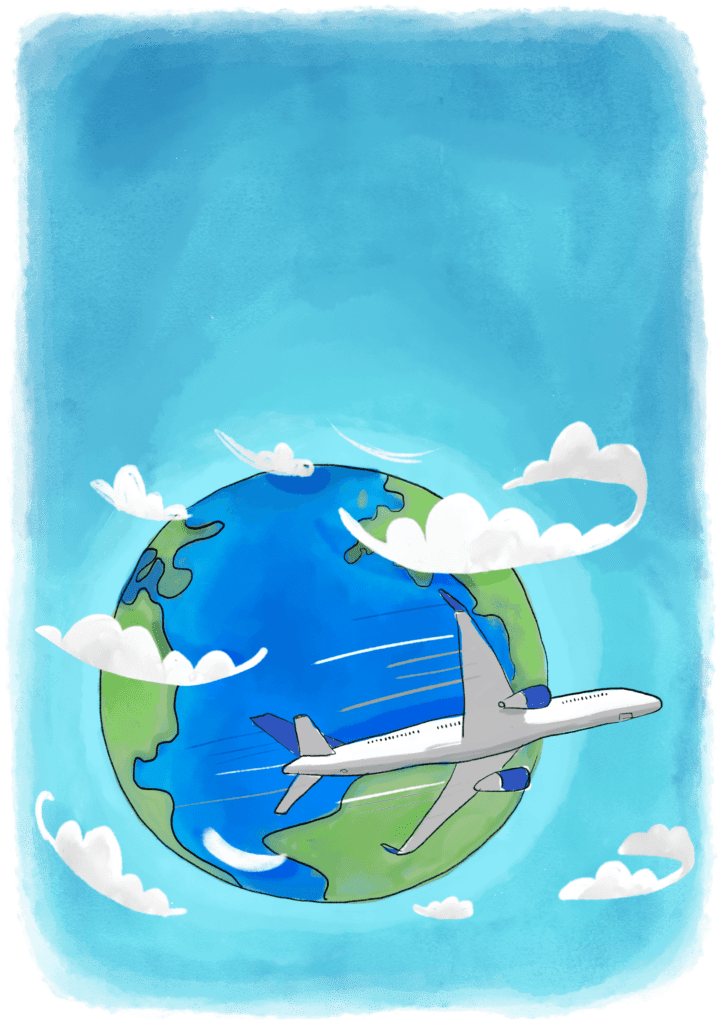
When you prepare for a round-the-world (RTW) trip by plane, you must choose between travelling with a RTW ticket or buying your tickets one by one. Both options have their pros and cons. In this article, we’ll explain in detail how RTW tickets work and we’ll give you lots of tips to help you maximise your budget.
We carried out a big survey between 21st and 24th August 2018, amongst 398 round-the-world travellers. We asked them how they bought their plane tickets, how many flights they took, how much they paid for them, etc. We’ll refer to this a lot in this article. The respondents were French-speaking (French, Swiss, Belgian and French Canadians). As soon as our English-speaking community is large enough, we’ll conduct another survey. read more about our surveys methodology
A RTW ticket is a set of plane tickets sold together. It lets you travel the world from east to west or west to east, returning to the place that you started from.
RTW tickets are offered by specialist travel agencies, by the three main airline alliances Oneworld, Star Alliance and SkyTeam (suspended), and by some airlines who have partnerships with other airlines.
Their prices typically range from $2,500 (£1,700) to $6,000 (£4,300) in economy class, depending on the departure city, the number of continents crossed, the distance covered, and sometimes also the departure date.
You can arrive by plane in one airport and set off again from another, travelling between the two by other means of transport (bus, train, boat…). These are called surface (non-air) sectors.
Most flight dates can be changed free of charge. Destinations, on the other hand, can’t be changed unless you pay additional costs.


Is it better to buy a RTW ticket or buy plane tickets one by one? There isn’t an easy answer to this question. RTW tickets have pros and cons. So, they’re well suited to some travellers, but less to others.
If you buy a RTW ticket, you’ll be able to take full advantage of your trip around the world, without having to worry about plane tickets during your trip.
However, if you buy your tickets as you go along, you’ll have to spend several hours on your smartphone, tablet or computer rooting around for offers with attractive prices. So that means less time to make the most of your trip.
Of course, you can buy all of your tickets one by one by yourself before setting off, rather than opting for a RTW ticket. However, the dates of your tickets can’t be changed whenever you like, unlike RTW tickets. In that case, you’ll lose your flexibility.


Looking for plane tickets is a real hassle!
With a RTW ticket, you can usually change the flight dates at no extra charge. If you go through an agency, date changes are often free of charge. On some tickets an airline fee and fare difference is payable, but it’s a small amount.
If you want to stay longer in a country that you like, or perhaps the opposite, you want to shorten your stay in a place that doesn’t work for you, all you have to do is send an email to reschedule your next flight.
If you choose to buy your tickets as you go along, in order to get a good price you’ll need to book them several weeks, or even several months, in advance, at least for intercontinental flights. The date will then be fixed and expensive to change.
Buying a RTW ticket lets you know, in advance, most of the plane ticket budget for your trip.
Globetrotters with a RTW ticket typically buy a few extra tickets during their trip. But these are mostly short-haul flights within a continent. They don’t have a huge impact on their budget.
94% of globetrotters who travelled with a RTW ticket also bought at least one other plane ticket during their trip (four extra flights on average).
Buying a really basic RTW ticket, with just a few long-haul flights between continents and surface sectors between each, allows you to keep on top of your transport budget whilst keeping some flexibility during your trip. You’ll then be able to take advantage of attractive prices from local low-cost airlines (especially in Asia), as well as buses and trains to travel between two flights on your RTW ticket.
If you opt for a RTW ticket, sign up for the loyalty programme of the airline with which you’ll travel the most distance during your trip. That’s right, you can accumulate miles from all the flights on your RTW ticket taken with airlines from the same alliance.
You accumulate more miles from the airline whose loyalty programme you signed up for, than from the other alliance airlines. For example, if you travel with Oneworld, you can sign up to British Airways’ Avios program to earn miles with this company.
To board a flight to certain destinations, you might sometimes be asked for an onward ticket at the airport information desk (or, more rarely, at the arrival country’s customs). Local authorities fear that some tourists illegally stay in their country and therefore ask airlines to verify that their travellers have an onward ticket, proving that they’re going to leave the country.
If you buy your tickets as you travel, there are times when you’ll need to be cunning in order to avoid being denied boarding.
If you have a RTW ticket, you’ll be able to show the next flight on your itinerary. Even if you don’t leave from the same country, this works in the vast majority of cases. Travel Nation agency told us that during the past five years, they’ve only had two cases of customers being denied boarding because of an onward ticket issue.
If it ever happens to you, don’t worry, there are ways to get around this problem. We tell you all about it in our article Travelling without a return or continuation ticket.
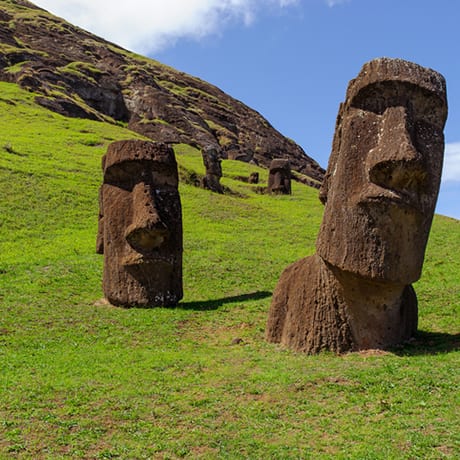

the unique opportunity to visit Easter Island
A RTW can also be appealing if you want to go to the Pacific Islands. Indeed, adding steps between Auckland and Santiago, for example, usually doesn’t increase the price of your ticket that much.
Therefore, 82% of globetrotters who went to Polynesia, 87% of those who went to New Caledonia and 91% of those who went to Easter Island all took a RTW ticket (since LATAM left the Oneworld Alliance, Easter Island can’t be included in round the world tickets anymore).
Plane ticket prices significantly increase in peak season. If your RTW itinerary is geared towards visiting lots of countries during the height of their peak season, there’s a good chance you’ll pay full price if you buy your flights one by one.
A RTW ticket, on the other hand, helps you avoid paying for expensive tickets. In fact, its price doesn’t depend on your flight dates. In some cases, with agencies, it can depend on your departure date. But it rarely depends on the other flight dates in your RTW ticket.
If you travel with a RTW ticket, you need to figure out your itinerary before the departure date, or at least the key features. As a matter of fact, changing the destinations on your RTW ticket costs a lot.
However, if you buy your tickets bit by bit, you can more easily go with the flow – follow your desires and make the most of nice surprises or random opportunities. Nonetheless, it still needs to be put into perspective. If you don’t want your tickets to cost an arm and a leg, you’ll still have to buy them well in advance. Therefore, your flexibility will be limited.
On the other hand, if you make do with a RTW ticket that only includes intercontinental flights, you’ll have a lot more freedom.
The more flights your RTW ticket has, the more you risk losing them due to an unforeseen event or a change in schedule.
You might have to change a destination for reasons beyond your control: floods, earthquakes, coups… You might also simply want to change a destination on your itinerary or want to extend your trip beyond the one-year limit, and therefore lose your return ticket.
If you buy your RTW ticket from one of the three major alliance’s websites, you’ll have to comply with a certain number of rules which can be quite restrictive:
See below for in-depth rules of each alliance
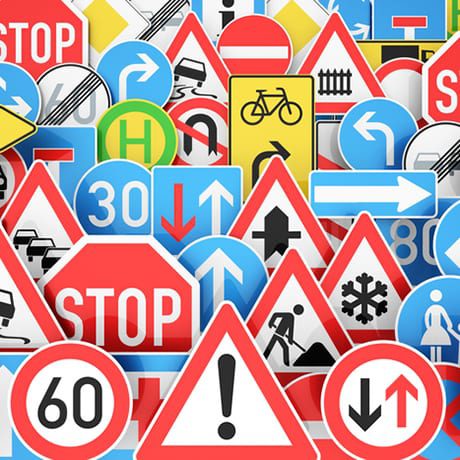

All the rules for alliance RTW tickets!
According to our survey, globetrotters who bought a RTW ticket spent $3,800 (£2,700) on average for their RTW ticket, plus $470 (£350) for extra flights bought during their trip. Globetrotters who bought tickets themselves spent $4,100 (£3,000) on average on plane tickets.
The price per flight is almost the same with both methods, as those who buy their tickets themselves take one less flight on average.
If you buy all your plane tickets one by one well in advance by using flight comparison sites, you’ll probably get a slightly better deal than a RTW ticket.
However, this method eliminates the main advantage of buying tickets one by one: flexibility. In fact, not only will your destinations not be as flexible as with a RTW ticket, but you won’t even have the option to change your dates free of charge.
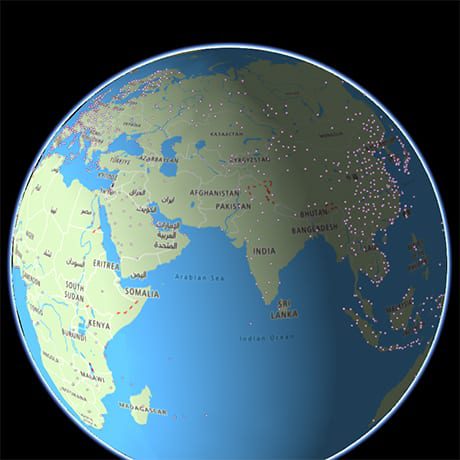

The world map showing SkyTeam’s destinations
Alliances like Oneworld, Star Alliance and SkyTeam group lots of airlines together and cover a large number of airports around the world. However, if you have a very specific itinerary that’s really off the beaten track, some of your destinations might not be included. This is often the case in Africa.
This disadvantage mainly concerns the purchase of a RTW ticket via alliance websites or airlines. If you go to a specialist agency, they can offer you a quote for almost any itinerary.
The final flight of your RTW ticket can’t take place more than a year after the date of your first flight. It’s impossible to change its date beyond this limit. This rule will apply regardless of how you purchase your RTW ticket. Having a fixed return date leaves less room for unexpected opportunities whilst travelling.
During our RTW trip, an organisation defending the rights of Aborigines offered me the chance to work for them. I would’ve been a bus driver for two months on a reserve in the heart of wild Australia. This offer looked like a great adventure, and I would’ve earnt a good salary. However, I had to refuse it. The principle of RTW tickets meant that I had to return no more than one year later from Mexico.
Adding a several month digression to my RTW trip would’ve therefore meant travelling much less in other countries and subsequently having to move much faster thereafter to get to my last country. If I hadn’t purchased a RTW ticket, I could’ve experienced this amazing opportunity and decided to postpone my trip without radically changing my initial plan.
Throughout their trip, most globetrotters come across opportunities which they never imagined before setting off. Imagine, for example, that you felt like doing some wwoofing or volunteering, getting a diving certificate or simply staying longer than expected in a country to make the most of a place where you feel good or where you want to get off the beaten track… You could only do it by picking up the pace for the rest of your trip or by striking off countries from your itinerary.
Setting yourself a fixed return date therefore means accepting that your trip won’t have as much room for unexpected surprises. Best think carefully before imposing these ties on yourself, which can change the course of your trip.
Some globetrotters who travel for more than a year or who don’t have a fixed return date in advance simply choose to lose the last flight of their RTW ticket, but 60% of them prefer to buy all their flights one by one.
In the end, it’s not really the price that’ll make you lean towards one option over the other, but rather your level of planning and the length of your trip, as well as the degree of peace of mind you want to have once you’ve set off.
Buy a RTW ticket if:
Buy your tickets one by one if:
According to our survey, 33% of round-the-world travellers bought their tickets one by one and 67% took a RTW ticket, including:
2% via an airline
62% via a specialist agency
When you google “round-the-world ticket”, many websites only explain how the RTW offers work for the three major airline alliances: Oneworld, Star Alliance and SkyTeam.
This information probably won’t be the most useful to you. Globetrotters who buy a RTW ticket usually compare prices from alliances with those from specialist travel agencies. However, almost all of them end up buying their ticket from a travel agency.
That might seem surprising. Why do almost all globetrotters go through an agency when alliances offer decent solutions to buy them online? Why go through a middle-man who’ll take a commission in the process? intermédiaire qui va se prendre une commission au passage ?
The main reasons are that alliances impose restrictive rules in the planning of your itinerary, and their rates are often higher than those of travel agencies, once airport taxes and surcharges are added to the base price.


The three airline alliances
We’ll still explain in detail how alliance RTW tickets work.
Most rules concerning RTW tickets are exactly the same for Oneworld, Star Alliance and SkyTeam.
Departure and arrival
Your trip must start and finish in the same country, but not necessarily in the same city. It’s therefore impossible, for example, to go from London to Beijing by train, take your first flight in this city, and then finish your trip in London.
Trip duration
There must be a minimum of 10 days and a maximum of 1 year between the date of your first flight and the date of your last flight.
RTW tickets use zone rates from the International Air Transport Association (IATA), called traffic conferences, which divide the world into three zones.


Between each of these three zones, you must always travel in the same direction: from west to east or east to west. Therefore, you can’t do a trip like this: Europe – Asia – Africa – Australia – America – Europe, because the Asia-Africa stretch would make you backtrack.
You must take exactly one flight over the Atlantic and another over the Pacific (no more, no less).
The first crossing between two zones has to be done by plane. It can’t be done overland. If you want to include the Trans-Siberian Railway in your RTW ticket, you’ll need to go through a specialist travel agency. Read our article about the transsiberian
Within each zone, on the other hand, you don’t always have to go in the same direction. You can zig-zag around if you want to.
Your itinerary can include from 3 to 16 segments, except for the cheapest RTW tickets, limited to 26,000 miles, which can’t have more than 6 segments.
Each flight sector with a stopover counts as a segment. Travelling between two airports by land also counts as a segment.
You can change the date of your tickets for free up to 24 hours before departure, but it can’t be later than one year after the date of your first flight.
To change the date of one of your tickets, you just need to send an email or call the airline you’re flying with. This is usually sorted in less than 24 hours.
You can change the departure and / or arrival city of your flights, but that’ll cost you $125 per ticket change.
Stopovers
Staying in a city for more than 24 hours and crossing a surface sector between two regions count as stopovers.
Oneworld :
Star Alliance :
SkyTeam (suspended) :
South Pacific Crossing
SkyTeam doesn’t allow you to cross the South Pacific, which automatically rules it out for many globetrotters who go through South America.
Since LATAM left Oneworld after its bankrupcy in 2020, Easter Island can’t be included in round the world itineraries anymore.
Luggage
Member airlines
| Oneworld | Star Alliance | SkyTeam |
|---|---|---|
|
|
|
Price
The base fare of alliance RTW tickets is shown excluding taxes and surcharges. This detail is important, as they generally represent between $590 and $1,200 (£430 and £850) on top of the base fare at Oneworld and Star Alliance, and between $120 and $235 (£85 and £170) at SkyTeam. We can’t give you an exact overall price, because taxes and surcharges vary a lot, depending on which airports you choose.
Star Alliance and SkyTeam only offer one type of ticket, the price of which depends on the distance covered.
Oneworld offers two types of RTW tickets:
Global Explorer, the price of which depends on the distance covered
Oneworld Explorer, the price of which depends on the number of continents crossed
| Oneworld Global Explorer | Star Alliance | SkyTeam Departing from the United States | |||
|---|---|---|---|
| The price depends on the distance covered | Oneworld Global Explorer | Star Alliance | SkyTeam |
| Up to 26,000 miles | $3,599 | $3,599 | Suspended |
| jusqu’à 29 000 miles | $4,999 | $4,930 | Suspended |
| up to 34,000 miles (33,000 miles with SkyTeam) | $5,699 | $5,610 | Suspended |
| up to 39,000 miles | $6,899 | $6,825 | Suspended |
| Oneworld Global Explorer |Star Alliance| Skyteam Departing from the United Kingdom | |||
|---|---|---|---|
| The price depends on the distance covered | Oneworld Global Explorer | Star Alliance | SkyTeam |
| Up to 26,000 miles | £1,800 | £1,794 | Suspended |
| Up to 29,000 miles | £2,100 | £2,088 | Suspended |
| Up to 34,000 miles (33,000 miles with SkyTeam) | £2,550 | £2,525 | Suspended |
| Up to 39,000 miles | £3,000 | £3,008 | Suspended |
| Oneworld Global Explorer |Star Alliance| Skyteam Departing from the European Union | |||
|---|---|---|---|
| The price depends on the distance covered | Oneworld Global Explore | Star Alliance | SkyTeam |
| Up to 26,000 miles | €2,110 | €2,126 | Suspended |
| Up to 29,000 miles | €2,500 | €2,534 | Suspended |
| Up to 34,000 miles (33,000 miles with SkyTeam) | €2,900 | €2,950 | Suspended |
| Up to 39,000 miles | €3,300 | €3,365 | Suspended |
| Oneworld Explorer | |||
|---|---|---|---|
| The price depends on the number of continents crossed | Departing from the United States | Departing from the United Kingdom | Departing from the European Union |
| 3 continents | $3,599 | £1,800 | €2,110 |
| 4 continents | $4,999 | £1,800 | €2,110 |
| 5 continents | $5,699 | £2,550 | €2,900 |
| 6 continents | $6,899 | £3,000 | €3,300 |
Be careful, the way of counting continents in the Oneworld Explorer offer isn’t based on IATA zones, but on those on this map:
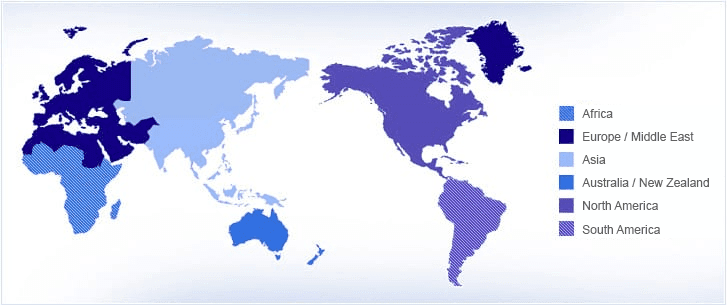

Fare for children in the three alliances:
From 0 to 2 years old (without a seat): 10% of adult fare
From 2 to 11 years old: 75% of adult fare (70% with Star Alliance)
You can buy alliance RTW tickets directly from their websites by using their RTW online planners:
You can also buy them by contacting one of the alliance’s member airlines or via a specialist travel agency.
We wrote a specific article detailing each the rules of each alliance:
If you research the different RTW ticket offers, you might hear about The Great Escapade, Four Corners, Discovery Tickets or World Walkabout. On some websites, these offers are misrepresented as RTW tickets that you can buy directly.
In reality, they’re not intended for individuals. They’re exclusively intended for travel professionals. They therefore serve as the basis for RTW tickets sold by specialist travel agencies.
Emirates is one of the only major worldwide airlines that isn’t part of one of the three alliances. To make up for that, they established a partnership with Air Tahiti Nui to offer a RTW ticket option.
The base fare is: $2,600 (£1,870) for a maximum of 6 stopovers. You need to add around $950 (£700) to $1,050 (£770) in taxes and surcharges, depending on your itinerary.
You always need to travel in the same direction: east to west or west to east. Similar to the alliances, you can’t travel overland between two zones.
Maximum duration is capped at 12 months.
Date changes are free of charge and itinerary changes cost $120 (£85). The RTW ticket is refundable before departure, but there’s a $120 (£85) charge.
With only two airlines, the number of destinations is limited. To cross the Pacific Ocean, you have to go through Los Angeles and either Tokyo or Auckland (always via Tahiti).


Taxes increase Emirates RTW ticket price
This offer doesn’t allow you to do a RTW trip through South America.
More info about the Emirates + Air Tahiti Nui round the world tickets
Even though it’s part of Star Alliance, Air New Zealand also offers its own RTW ticket.


Air New Zealand’s basic ticket is very cheap
Unfortunately, Air New Zealand doesn’t provide any prices on their website.
Their RTW ticket is valid for one year and date changes cost $70 (£50) in administration fees if purchased through Air New Zealand.
In theory, you should buy your RTW ticket using the international multi-stop booking engine on their website. But, we tried, and it’s just impossible. Whatever dates you pick, they’re never available.
You can directly purchase this RTW ticket from Air New Zealand by calling them on 0800 737 000 (NZ), 1 800 262 1234 (US) or 0800 028 4149 (UK), or by emailing them online
You can also purchase it through a specialist travel agency.
There are many travel agencies who specialise in RTW or multi-destination tickets:
According to our survey, 62% of round-the-world travellers bought their RTW ticket via a specialist agency.
If so many globetrotters buy their RTW tickets from an agency, it’s because there are several advantages.
Flexibility
Unlike alliances and airlines, agencies can quote you for any trip. They’re not limited to certain airlines and they can combine flights as they like. They don’t necessarily have to respect all the rules of no backtracking, air travel between zones, maximum number of stopovers per continent, miles and surface sectors. They can, for example, offer you a RTW ticket which includes crossing Russia by the Trans-Siberian Railway, or an air section between Auckland and Papeete.
Advice
Rules for RTW tickets are complicated. Specialist travel agents spend a lot of time creating itineraries for their customers. They know all the restrictions inside out. They can therefore advise you to avoid certain sectors that might increase the price of your ticket. Or, equally, give you the option to add some which won’t increase the cost of your trip too much. If it works out better for you, they’ll happily tell you to buy some low-cost tickets by yourself on the side.
Price
Agencies have access to RTW offers put forward by alliances and airlines, but at lower “negotiated” rates. They also have access to other RTW offers, reserved for professionals.
In addition, they know which airports have lower taxes. They can therefore offer you attractive prices. Of course, if your plan is too far-fetched, your first quote will probably be steep, but your travel agent can help you tailor it to fit your budget.
To be able to give you a quote, agencies will need the following information:


A quote form for a RTW ticket
Don’t hesitate to give them as much information as possible about your flexibility around dates, destinations you’re willing to change or ones you’d like to add as long as it doesn’t dramatically increase the fare.
You can also ask them to book bus passes, train journeys or rental vehicles if you wish.
Some agencies have an online trip planner. Others simply require you to fill in a form with the details of your trip. Once your travel agent receives your itinerary request, they’ll contact you by phone or by email.
Agency prices include taxes and surcharges. So, you won’t have any bad surprises.
It’s completely normal to have to talk several times with your agent before agreeing. However, keep in mind that it takes them a long time to make each quote. Don’t ask them to do dozens in a row.
Once you agree on the quote offered by the agency, you need to confirm your departure date, the stops in your itinerary, as well as the names of the travellers (make sure they’re spelt correctly).
First you need to pay a deposit. Your flight reservations will then be verified by a manager and you’ll receive a confirmation email. You’ll then need to pay the remaining balance about one week later.
Payments are generally made by credit card on the agency’s website. There are no chargers for card payments, except with American Express.
Consider asking your bank to increase the limit of your credit card a few days beforehand.
On vous conseille aussi de payer avec une carte Visa Premier ou Mastercard
If you have a credit card that includes travel insurance, use it to buy your ticket. You’ll only be insured for your trip if you pay for it with your credit card. But watch out, your card insurance will only cover you for a limited time. Therefore, you’ll need to buy a standalone travel insurance for the remainder of your trip.
Once you’ve paid the remaining balance, you’ll receive your electronic tickets six to eight weeks before your departure date.
In this section, we won’t detail the entire process of planning the itinerary for your RTW trip, because we’ve already written an article specifically on this subject (see our article Planning Your Itinerary for a Round-the-World Trip). We’re only going to focus on the RTW ticket.
All alliances and agencies use the same codification when writing RTW ticket itineraries:
A ticket example: London – Bangkok // Singapore – Jakarta // Bali – Darwin // Sydney – Christchurch // Auckland – Papeete – Easter Island – Santiago // Buenos Aires – London consists of 8 flights and 5 surface sectors.
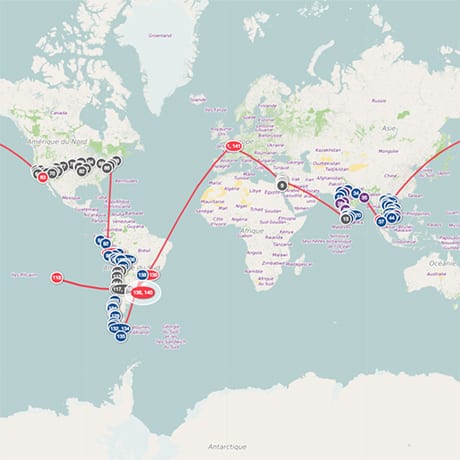

A sample itinerary of a RTW trip
Their principle is simple: you can arrive by plane at one airport and leave again from another, making the journey between the two on your own.
Strictly speaking, they’re not “surface” sectors, because you can partly cover them by boat. For example, the Bali // Jakarta surface sector requires a boat trip from Bali Island to Java Island.
If we had one piece of advice to give you when planning your RTW trip, it’d be to make the most of surface sectors!
Surface sectors have lots of advantages:
For each section, we counted the journeys in both directions. For example, Bali // Jakarta can also be Jakarta // Bali.
In Asia
In Australia / New Zealand
In Europe
In America
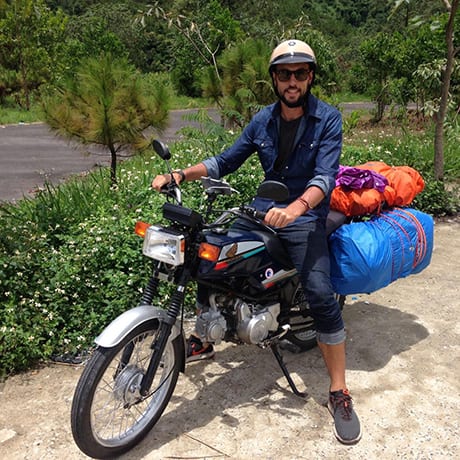

Hô Chi Minh – Hanoï is more fun by moto than by plane, isn’t it ?
You might be wondering why there aren’t any surface sectors in Africa on this list. There’s a simple reason for this: very few globetrotters travel to this continent.
Indeed, adding Africa to a RTW ticket is unfortunately extremely expensive. However, there are many other amazing surface sectors out there, such as Le Cap // Victoria Falls.
Some surface sectors are a little more complicated than others, but there are solutions:
The border between Panama and Colombia is also a little tricky to cross, as there are no roads in the Darién Gap, the area that separates the two countries. However, there are three solutions to help you cross this border:
The border between Myanmar and India has been closed for a long time due to security reasons. This made it impossible to do a complete journey overland between Europe and Asia via the south. Since August 2018, the border has been open if you go from India to Myanmar. Even so, check all the safety conditions in the area before going there.
According to our survey, RTW tickets include 10 flights on average. 94% of travellers who went for a RTW ticket also bought at least one extra flight during their trip. They bought 4 additional flights on average, so that’s 14 flights in total. In our opinion, this is way too many! In fact, when you ask globetrotters what they’d change if they were to do it all over again, many of them said they’d “take less flights”.
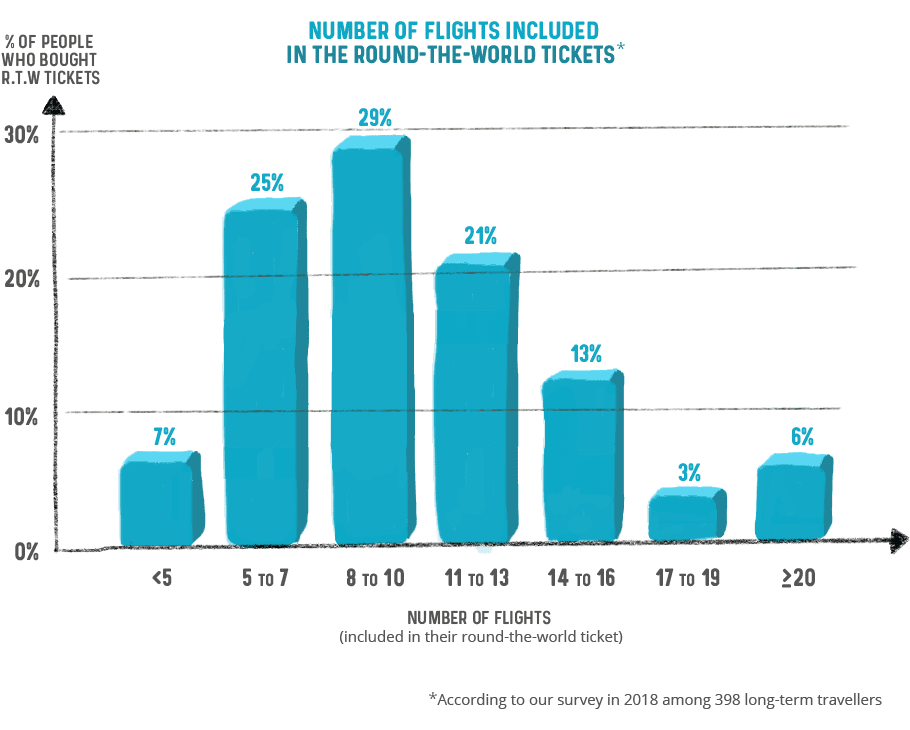

If you opt for a RTW ticket, we recommend that you limit the number of flights as much as possible. Taking one flight between each continent is more than enough when you can make use of long surface sectors. You can easily limit yourself to 3 to 5 flights, according to the number of continents you visit.
We’re not saying it’s easy, because you’ll always be tempted to add flights. “If I add this flight, that’ll only cost me $175 more, whereas if I’d bought it separately, it would’ve cost me $600, so it’s a bargain!” But, in reality, ask yourself this question: “Is this extra flight really going to make my trip more enjoyable?”. Don’t forget that each flight that you add to your RTW ticket may also hinder your freedom during your trip.
For each section, we counted the flights in both directions. For example, London – Bangkok can also be Bangkok – London.
Before you start to plan your RTW ticket, we advise you to take a look at what other globetrotters have done. The aim isn’t to do exactly the same thing as everyone else, but it’ll give you some food for thought.
You can look at specialist travel agency websites which give sample itineraries. They usually provide a price estimate, but it’s only a base price which often turns out to be higher. :
Another way to find sample itineraries is, quite simply, by searching “round the world itinerary” on Google Images. You’ll find plenty of RTW map itineraries.
All the globetrotters who responded to our survey travelled in economy class. A RTW ticket costs €3,250 on average per person, including taxes and surcharges. But this average reflects very different prices from one ticket to another. Some globetrotters manage to pay just over €1,000 for their ticket, whilst others spend over €6,000.
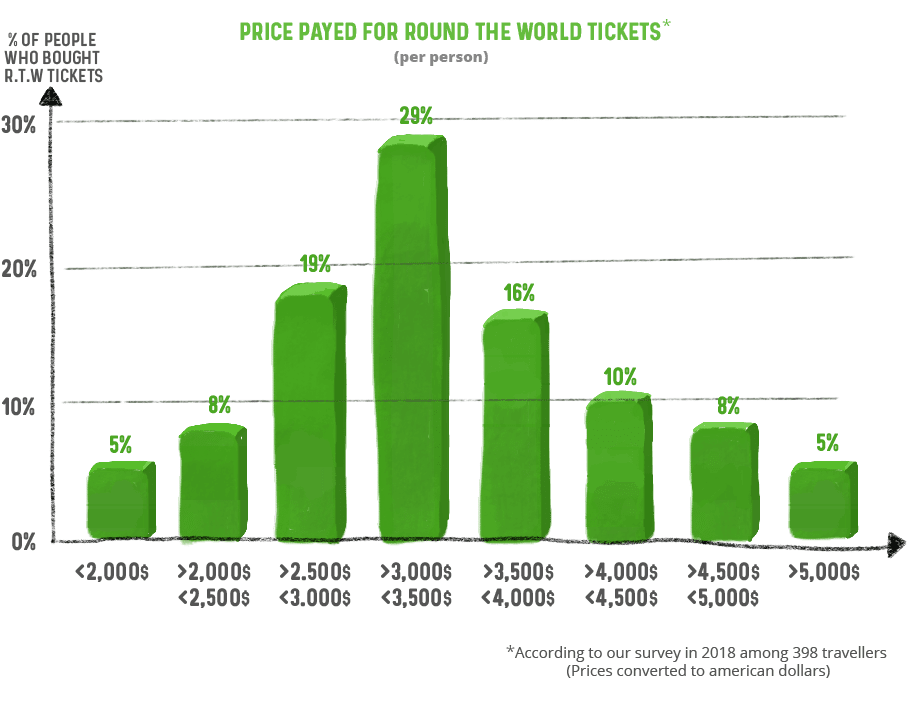

On average, RTW tickets purchased via an alliance or an airline cost €3,436 (€338 per flight) in comparison to €3,251 for those purchased via a specialist travel agency (€336 per flight). Tickets were therefore cheaper via the agencies, but only because there were fewer flights. Therefore, whether you decide to go through an agency, alliance or airline, the price per flight on average is almost exactly the same.
We analysed results from our survey and interviewed Sara Strachan at Travel Nation. She’s already helped thousands of globetrotters to optimise their itinerary. Here are some tips which will help you cut the price of your RTW ticket.
This is the main factor which influences the price of your RTW ticket. The more flights it has, the more expensive it’ll be.
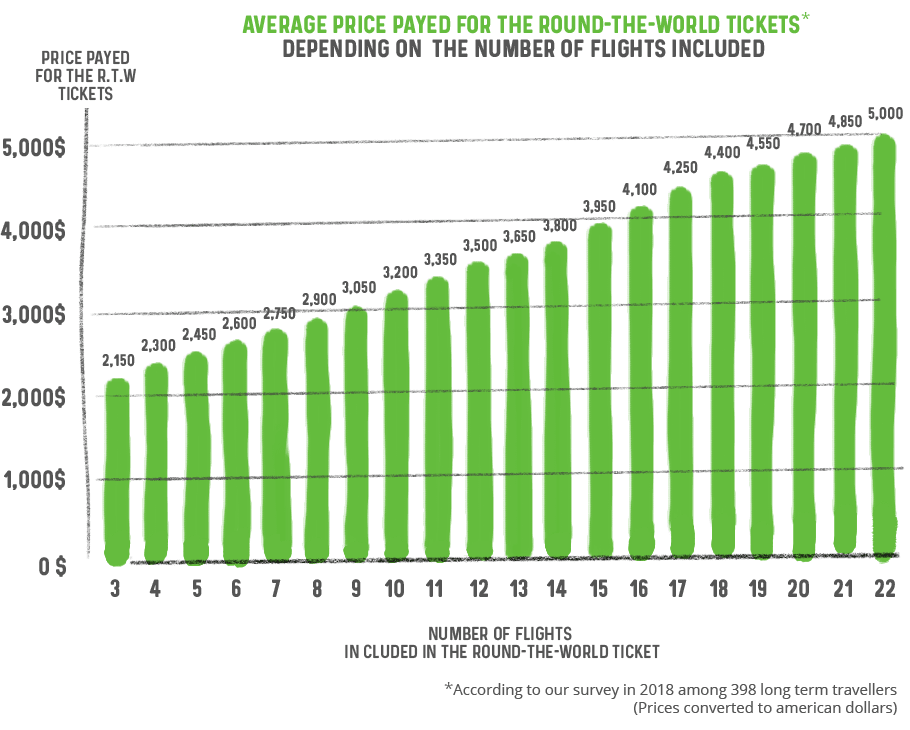

The sectors which will make the price of your ticket skyrocket are long-haul flights. It’s therefore better to focus on a few regions in the world, and take full advantage of them, to minimise the number of continents that are far away from each other.
As we told you earlier in this article, using surface sectors as much as possible is a great way to cut the cost of your RTW ticket, and it also has several other advantages: reduced carbon footprint, more flexibility, immersion in countries…
Plane ticket prices very much depend on the competition for the flight path. If it’s operated by a single company, it’ll be free to set high prices, without being too concerned about filling its planes. If, on the other hand, several airlines are competing to attract travellers, prices are driven down.
Therefore, make hubs your first choice, as most flights from major airlines pass through these big international airports.
The main hubs used by globetrotters are:
In Asie
In Oceania
In America
In Europe
Even if you can backtrack with a RTW ticket, this increases the distance travelled and therefore often the price of your ticket. What’s more, retracing your steps will make you spend an unnecessary amount of time on a plane, and will increase your carbon footprint.
Don’t wait until the last minute to make up your mind. According to our survey, the first time globetrotters contact agencies is usually 6 months before their departure date. It typically takes between 5 to 10 different quotes with an agency before confirming the itinerary. Going back and forth like this takes around 2 months. Purchasing the ticket is therefore done 4 months before the departure date on average.
Some countries make the price of RTW tickets shoot up. The main countries that globetrotters give up on, due to additional costs of plane tickets, are:


Africa makes the price of RTW tickets shoot up
In about 50% of cases the date of your first flight influences the price. Some round the world tickets prices vary according to the departure date.
The cheapest departure periods are:
The most expensive departure periods are:
The agency itself might also add tickets to a basic RTW offer to build your RTW ticket. In this case, the flight dates will also influence the price of your ticket.
82% of travellers who took a RTW ticket made at least one date change during their trip.
Dates of RTW tickets can be changed free of charge. However, if you go via an agency, your travel agent often adds plane tickets to a RTW offer to make your RTW ticket. In this case, you’ll have to pay around $60 (£40) to change the ticket dates that have been added. The agency will clearly inform you which flights can be changed free of charge and which ones you’ll have to pay for.
Some agencies have a specific option you can add which lets you change your flight dates free of charge.
Your agency will be your only point of contact to change the dates on your tickets during your trip. You’ll need to send them an email, fill out a form on their website or call them.
If you’ve bought your ticket from an alliance or an airline, you’ll need to send an email to the airline, specifying the flight date you want to change.
If it’s peak season or if there’s a big event that’ll attract lots of people, it’s better to book your ticket several weeks in advance. Indeed, the number of seats per plane allocated to the RTW fare class is limited.
Once they’re all taken, you can no longer fly on this date. Therefore, globetrotters sometimes find themselves trapped in a city for several days before being able to board a flight that has available seats for RTW tickets.
When you change the flight date, your booking will be changed. You’ll receive a new confirmation and a new e-ticket.
Perhaps you no longer want to take one of the flights on your RTW ticket. You might, for example, prefer to do this section by road or to buy another plane ticket yourself from another city.
In this case, it’s absolutely essential to let the airline know that you’re going to miss it. If you don’t do this, all your following flight bookings could be canceled.
You can change the itinerary of your RTW ticket during your trip, but you’ll have to pay. Generally speaking, it’s at least €100 per change.
All globetrotters who responded to our survey travelled in economy class. However, if you’re very rich and, for some obscure reason, you’ve landed on our website, there are also luxury RTW tickets.
All the RTW tickets that we’ve talked about in this article are also available in Business or First class:
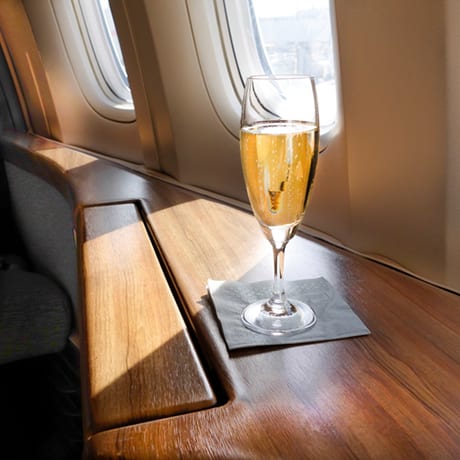

What’s a round-the-world trip without a little champagne?


A RTW trip like Speedy Gonzales, ¡arriba arriba!
If you really don’t know what to do with your money, there are also RTW air cruises.
It’s a plane exclusively chartered for a bunch of rich tourists. They go around the world in a few weeks, stopping at a dozen tourist hotspots around the world and staying in luxury hotels.
It costs roughly somewhere between $30,000 (£25,000) and $10,0000 (£85,000), depending on the class and agency according to CNN.
Let’s just say that this type of trip is the exact opposite of our values. Splashing a fortune to be able to have your picture taken in front of a few tourist hotspots, without having the time to immerse yourself in different countries, but polluting the planet as much as possible… we don’t really see the attraction.
Going around the world is not an objective in itself. A long trip in one or two continents can be just as enriching. We advise against doing a “real” RTW trip if you’re going for less than six months.
The three major alliances and several different airlines offer air passes for some continents or big countries.
The price of an air pass usually depends on the number of segments, the distance covered and the duration of your trip. Some passes also include the price of intercontinental flights to get you to the region. With some passes, you sometimes have to book each flight before your departure, with others, you can change the dates of your flights and add segments whilst travelling.
Most air passes can’t be bought online. You need to contact the alliance, the airline or go through a travel agency.
Generally speaking, air passes are only accessible to travellers who live outside the region.
Don’t work on the assumption that an air pass is necessarily cheaper than other options. Always check out the alternatives: multi-city tickets, one way tickets, low-cost companies, buses, trains and boats.
Africa
North America
South America
Oceania
Multi-city tickets include several stops, without necessarily being a RTW trip.
A multi-city ticket is a single ticket with several segments. Multi-city flights are available with all airlines. They don’t need to be in the same alliance. You can include surface segments between some flights and you don’t have to return to the same airport that you departed from. However, unlike RTW tickets, the dates usually can’t be changed for free.
Several flight comparison sites offer multi-city tickets, for example: Momondo (up to 4 stops), Kayak (up to 6 stops) or Skyscanner (up to 6 stops). Travel agencies specialising in RTW tickets also sell multi-city tickets.
A multi-city ticket is often cheaper than the total of one-way tickets corresponding to the same itinerary. However, this isn’t always the case, because flight comparison sites and agencies don’t always include low-cost airlines.


Multi-city search on Skyscanner
The last alternative to Round-the-world tickets is to simply buy your plane tickets one by one. As we saw at the beginning of this article, 33% of globetrotters buy their tickets in this way.
Greenhouse gas emissions are responsible for the gradual increase in the average temperature of the earth’s surface. The consequences of climate change are serious: melting ice-caps, rising sea levels, forest fires, droughts, floods, coral bleaching, cyclones, loss of biodiversity…
As travellers, we must be aware of our impact on the environment.
The plane is by far the mode of transport which has the biggest impact on global warming. Three phenomena cause this impact:
Radiative forcing contributes at least as much to global warming as the CO2 emitted by airplanes.


Airplane condensation trails speed up global warming
We therefore advise you to use this Carbon Footprint calculator which takes into account the radiative forcing of airplanes and also allows you to calculate your emissions if you travel by bus, train, car or motorbike.
A round-the-world takes 14 economy class flights on average, this includes tickets bought whilst travelling. This is equivalent to emitting 15 tonnes on average of CO2.
On average, air travel represents 75% of greenhouse gas emissions when travelling around the world. Other emissions are mainly distributed between bus and train trips, food, energy consumption in accommodation and goods and services that you consume and use during your trip.
Selon le Programme des Nations Unies pour le Développement, pour limiter le réchauffement de la planète à +2°C, il faudrait réduire nos émissions à 1,7 tonne de CO2 par personne par an.
According to the United Nations Development Programme, to limit the warming of the planet to +2°C, we should reduce our emissions by 1.7 tonnes of CO2 per person per year.
CO2 emissions per capita are on average 5,8 tonnes in the UK and 15,5 tonnes in the US, according to the World Bank.
If you get around on public transport or bike, live in an apartment and / or don’t eat much meat, your emissions are probably a little lower.
If you take 14 flights during your RTW trip, you’ll emit the equivalent of about 1 year of greenhouse gases if you live in the US and 3 years of greenhouse gases if you live in the UK.


Perhaps I could do a RTW by bike…
The best way to lessen your impact on the environment is by travelling by a means of transport that doesn’t emit CO2. Even if they’re in the minority, several globetrotters travel the world by sailboat, by bike or on foot. Beyond the environmental impact, these means of transport are cheaper, more sporty, closer to nature and they allow you to really get off the beaten track.
You can also choose to travel by cargo ship instead of by plane to go from one continent to another. Even if cargo ships pollute, it’s considered that this means of transport emits almost no CO2 per traveller, because your weight is insignificant in relation to that of the goods being transported.
On the contrary, travelling by liner or ferry is extremely polluting, because the immense weight of a ship has to be moved for passengers only. According to the NGO Climate Care, a liner emits two times more CO2 per passenger than a plane for the same distance.
Cars, vans, camper vans or motorbikes, even though they still pollute, emit less CO2 per kilometer travelled per person than a plane. For example, a return trip of a family of four from Europe to Southeast Asia (around 20,000km (12,427miles)) with a camper van which consumes 12L/100km (19.6 US miles per gallon) emits just over 6 tonnes of CO2, or 1.5 tonnes per person.
A return trip from London to Bangkok in economy class by plane emits the equivalent of 3.5 tonnes of CO2 per person, so that’s more than double. Cargo ship vehicle transfers between continents emit a relatively small amount of CO2: around 0.3 tonnes to transport a 3 ton camper van between Sydney and Valparaiso for example.
If, instead of taking 14 flights, you manage to limit yourself to one flight per continent, you’ll massively reduce your CO2 emissions.
For example, a RTW ticket from London – Moscow // Beijing – Los Angeles // New York – London in economy class only emits 2.5 tonnes of CO2, that’s six times less than an average RTW trip.
Airplanes use the largest amount of kerosene during landing and take-off. The shorter the flight, the more CO2 it emits per kilometer travelled.
Therefore, avoid taking flights for short distances. When in each continent, take advantage of surface sectors as much as possible to reduce the distance travelled by plane.
According to the Department for Transport’s 2021 Annual Report a journey between London and Glasgow (413 miles) in the average petrol car emits roughly 4 times more CO2 equivalent per passenger than the equivalent journey by bus. The same journey by plane (345 miles) would emit over 7 times more CO2 equivalent per passenger than by bus, and 70% more CO2 equivalent per passenger than a journey by the average petrol car.
A carbon offset is a way to neutralise your carbon emissions racked up by plane rides. It funds projects that aim to reduce the same amount of greenhouse gases elsewhere. These projects are usually located in developing countries.
There are three types of project:
Many organisations allow you to offset your carbon footprint. Some are businesses, others are organisations. We recommend that you go through GoodPlanet Foundation.
Projects funded by this organisation:
The cost of a carbon offset for a RTW trip emitting 10 tonnes of CO2 is between $235 (£170) and $295 (£215).
However, offsetting emissions has its limitations. When you emit CO2, that stays in the atmosphere, even if you pay for a Peruvian farmer to reduce your carbon footprint for you. Some people see carbon offsetting as a type of greenwashing. At the end of the day, isn’t it just a way to buy ourselves a clear conscience without having to really change our behaviour?

